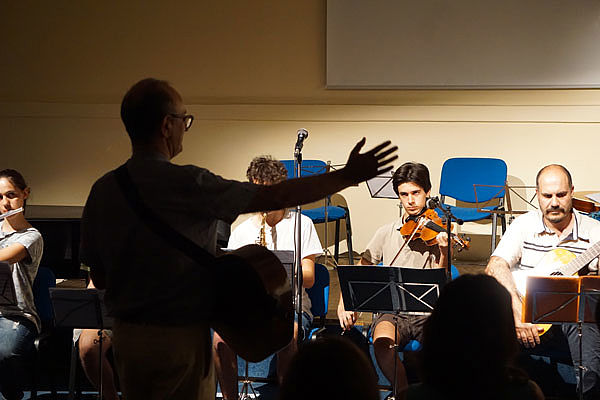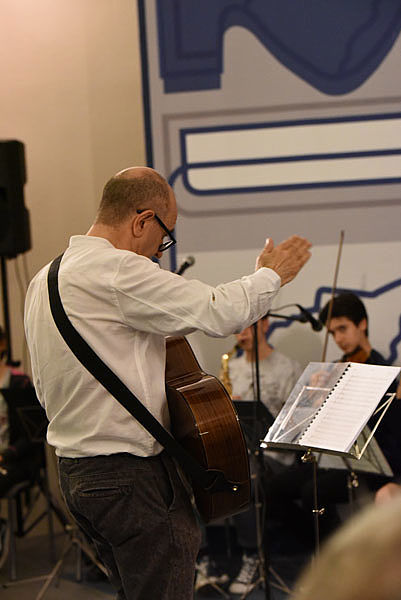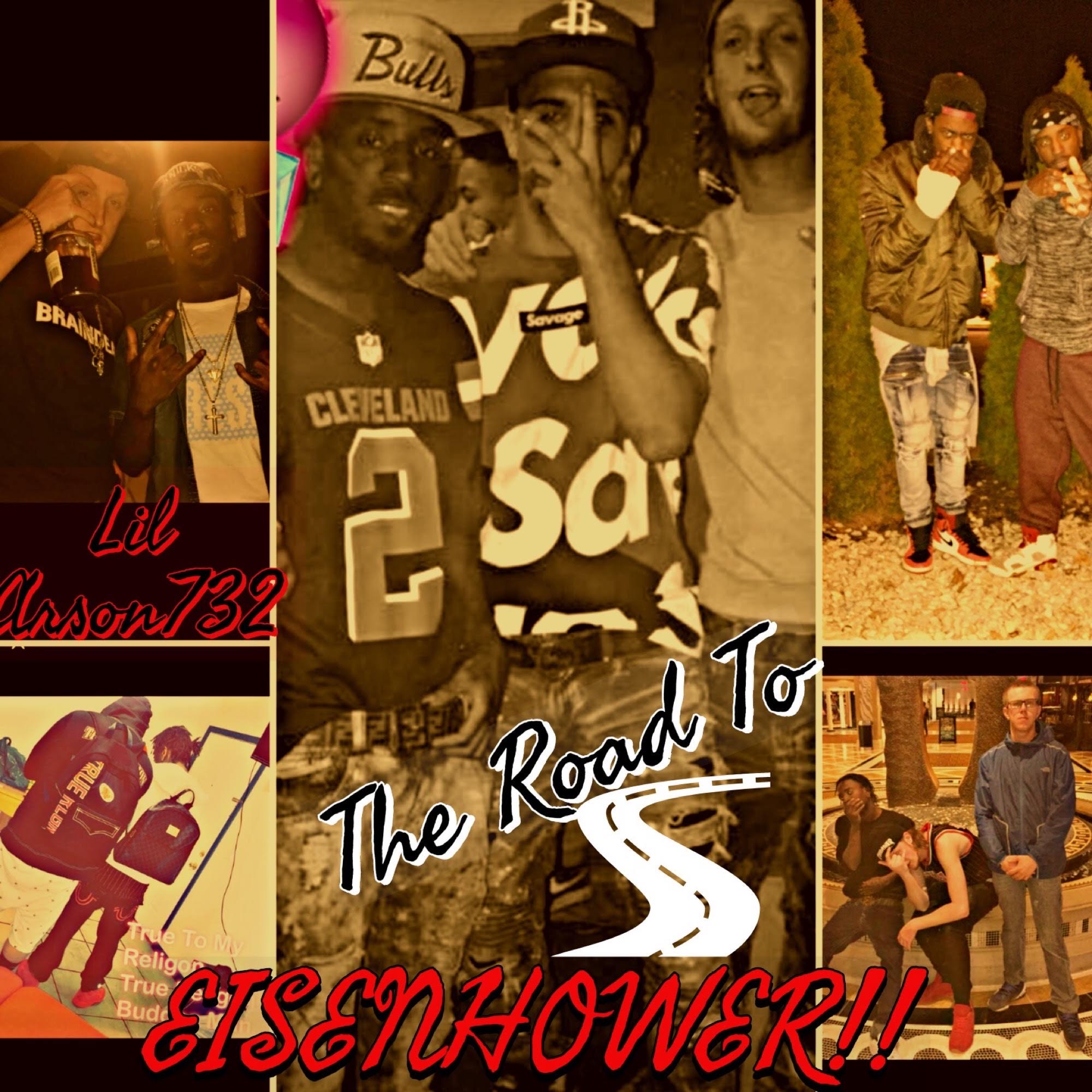Interview with Stefano Giannotti – From tape experiments to a global opera
Stefano Giannotti is a man of many talents. Classically trained in composition, he’s creating music existing on the boundaries of art-rock, avant-garde classical music, electronics and even poetry. It’s always great to see artists with such impressive background in music on Drooble because not only do they get the chance to present their craft a new breed of artists but they have a lot to share with the younger generations. Just take a look at Stefano’s list of influences, we bet there are at least five records you haven’t yet even heard about. Now meet the man!
Hello! Tell the world about yourself. How did you grow up to become a musician?
My name is Stefano Giannotti, I’m a composer and performer. I’m also involved in radio and video art.
When I was 11 years old I asked my parents to buy me a guitar and a harmonica. My idea was to write songs and sing. At that age, my role models were The Beatles, Rolling Stones, Joe Cocker, Lucio Battisti. Just a few months later I discovered that I could record myself on a cassette player while playing and singing and then using this recording as a playback and do overdubs with a second cassette-player. This has been the most important discovery in my life and it influenced me for all the years to come. In fact, starting from this rudimental idea of a studio, step by step I started building a real home studio. Today this allows me to be rather autonomous and be able to do 80% of the work on my music at home.
Between the age of 11 and 20, I took private lessons in classical guitar. Then I went to the conservatory and studied composition (at that time this meant to spend 10 years of studying harmony, counterpoint, orchestration). In the meantime, I played the guitar in the chamber music group Trio Chitarristico Lucchese. I studied piano, I attended the lessons of the American composer Alvin Curran and self-taught myself a great many disciplines as cinema, photography, electronic music, singing etc.
In 1991 I tripped into radio-art by chance. I was invited to the 1991 Polish International Festival Macrophon in Wroclaw, with a piece entitled “Ritratto di Paese”, made of natural sounds and the voices of the elderlies of the little country village where I live in Italy (Gattaiola, close to Lucca). I didn’t realize that this was a radio-art competition, I thought it was something concerning experimental music. I got the first prize in the category of the radio-documentary and this was the beginning of all my future carrier (it opened mtìy eyes and ears on a world totally unknown to me).
Introduce your current musical projects and tell us what makes each one special for you!
Мost of my projects are rather oblique, difficult to pinpoint to a specific genre or discipline. For this reason, I like all of them; it’s a continuous discovery.
Basically, I’m moving into three different fields: on one side I write radio-dramas for the German National radio-stations (SWR, Deutschlandradio Kultur); these are works which I would define more as acoustic literature, something between sound, music, text, with a certain dramaturgy, sometimes very experimental, sometimes more classic. You can find some examples on my page: http://stefanogiannotti.com/en/radio-arte/

In parallel, I’m working at the project OTEME (Observatory of Emerged Lands) a chamber-music group (5 to 8 musicians) halfway between avant-garde rock and classic contemporary music. Something you might find reminiscent of Henry-Cow, Frank Zappa, King Crimson, Robert Wyatt, but also Feldman, Stravinski, Messiaen, and Cage. On May 2018, IL CORPO NEL SOGNO, our third CD, has been released for the Italian label Company Ma.Ra.Cash Records. You can visit the page http://oteme.com/en/il-corpo-nel-sogno/
In the field of chamber music, I’m the director of a large student ensemble named ORCHESTRA SMS (13 to 16 elements). With them, we play arrangements from The Residents, Robert Wyatt, Lucio Battisti, Pink Floyd, David Bowie, some compositions of mine and some by my students, some Renaissance, and Baroque music. It’s a unique blend of art-rock, psychedelia, experimental music (we have a piece entirely performed on mobile phones and mics). You can get an idea here: https://www.facebook.com/orchestrasms
Then sometimes I move myself in the field of video-art with projects which range from experimental video to anthropologic documentaries, from installation to shorts and video-clips). A taste of it find here: http://stefanogiannotti.com/en/videos/
My most recent project is a piece for orchestra entitled THE IFUGAO CLOUD; this has been part of a large project involving 20 composers from all over the world to the Ifugao region (north of the Philippines).
All of my projects are special. No matter if it is a song or a music theatre opera, a radio-drama, a text or a video; all of them are are a way to present my ideas to the world and to picture our reality.
You have been playing music for a long while! How do you find the drive and inspiration to keep going all this time?
It’s difficult to say where the inspiration comes from. Mostly it’s from observing the world where I live, watching people’s behavior or simply the landscape. Sometimes it’s stories I’ve heard. Very often reading good books or watching films also contributes. Not so often it comes (in my case) from the music itself. My inspiration is more based on an anthropologic take on reality.
How is your local music scene in your perspective? Do you feel like you belong there?
I don’t feel that I belong to a particular music-scene, especially in my own country. For sure I belong to the community of radio-artists, very strong in Germany and expanding all over the world. To tell you the truth my work in this field is slightly different from classic experimental radio. It contains elements taken from other disciplines and sometimes it’s difficult to put a frame to it. Besides that, most of my artistic activities are being developed outside of Italy. This allows me to travel and get in touch with inspiring artists with whom I share my experiences. In Italy, the artistic scene is catastrophic, due to continuous budget cuts. Most of my colleagues, all very good artists in many different disciplines, try to work abroad as well.

What is your all-time favorite record and how did it change you as an artist?
Probably it is Ravel’s Bolero. But I could add a myriad of very important LPs and CDs who have changed my life, like “Selling England by The Pound” by Genesis, “Rock Bottom” by Robert Wyatt, “La Sacre du Printemps” by Igor Stravinski, “Sonatas and Interludes for Prepared Piano” by John Cage, “Music from the Penguin Cafe” by the Penguin Cafe Orchestra, “Songs and Views from the Magnetic Garden” by Alvin Curran, “Music for 18 Musicians” by Steve Reich, “Uncle Meat” by Frank Zappa, Bach’s “Cantatas”, “Low”, “Heroes” and “Station to Station” by David Bowie, “Music for Airports” by Brian Eno, Giacinto Scelsi’s “String Quartet No.3”, “I’m Sitting in a Room” by Alvin Lucier, “Generation sans Futur” by Art Zoyd, “Manafon and Brilliant Trees” by David Sylvian, “Possible Musics” by John Hassel, “Desire and Blood on the Tracks” by Bob Dylan, “L’Apparenza and LA Sposa Occidentale” by Lucio Battisti, “La Buona Novella” by Fabrizio De André, the trilogy “Radio Gnome Invisible” by Gong, “Pictures at an Exhibition” (Mussorgski/Ravel but also Emerson lake & Palmer), “Pawn Hearts” by Van Der Graaf Generator, “Discipline” by King Crimson, etc.
What are your favorite software and hardware tools for music production?
These will be Pro Tools and Finale, Final Cut for video.
What is your songwriting process like?
Actually composing songs in these past years has been more complex than facing a big opera; probably because my aim is to create songs which do not sound like rock music or like classic compositions. So, the process is long and full of obstacles. Generally, I start writing a few lines of a text, then I immediately try to find the right chords (sometimes on the guitar, sometimes on piano, recently creating an electronic soundscape with them).
Then I have to arrange it for different voices (the most of my songs are based on several choral layers) and then instruments, which I generally choose from classical music (flute, oboe, clarinet, bassoon, etc.). Those are then combined with electronics and or rock instruments like electric guitar, bass, and jazz extended drums. In past, this process took me years. Now I’m faster, but still, to make an entire piece it usually takes me at least a year
Out of all the live shows you played, which one was the most memorable, and why?
I have nice memories of one gig with OTEME in the Palace of the Province in Lucca in 2010. This was our first concert. Here is the video of the piece PER MANO CONDUCO MATILDE: https://www.youtube.com/watch?v=BMvcnpxzy7E.
It was the beginning, and on this particular evening a lady introduced herself to us and asked us to publish a record for her label (Catherine Costanza / Edd Strapontins). We were younger and full of expectations.
What is your biggest musical goal?
Creating a global opera, made of texts, music, video, performance. But more or less it is what I’m already doing most of the times. The difficult part is repeating a concert program and not creating one time events.
How has being on Drooble helped you as a musician?
Drooble for me is new, but it looks like a great opportunity to share my music and get in touch with other musicians. In the short time I’ve been on board I’ve already got some good feedback. Today it’s impossible to avoid social networks and Drooble seems to be a very good means of promotion.







